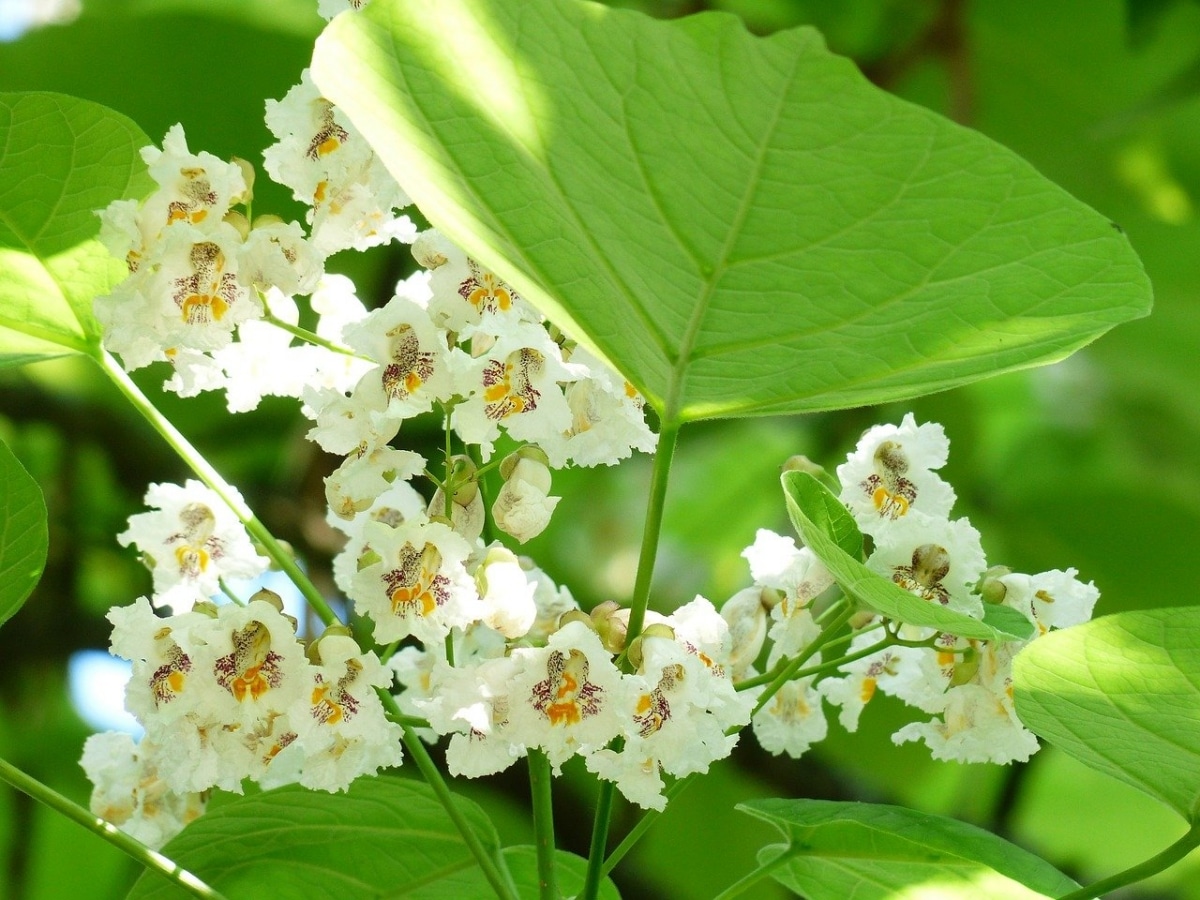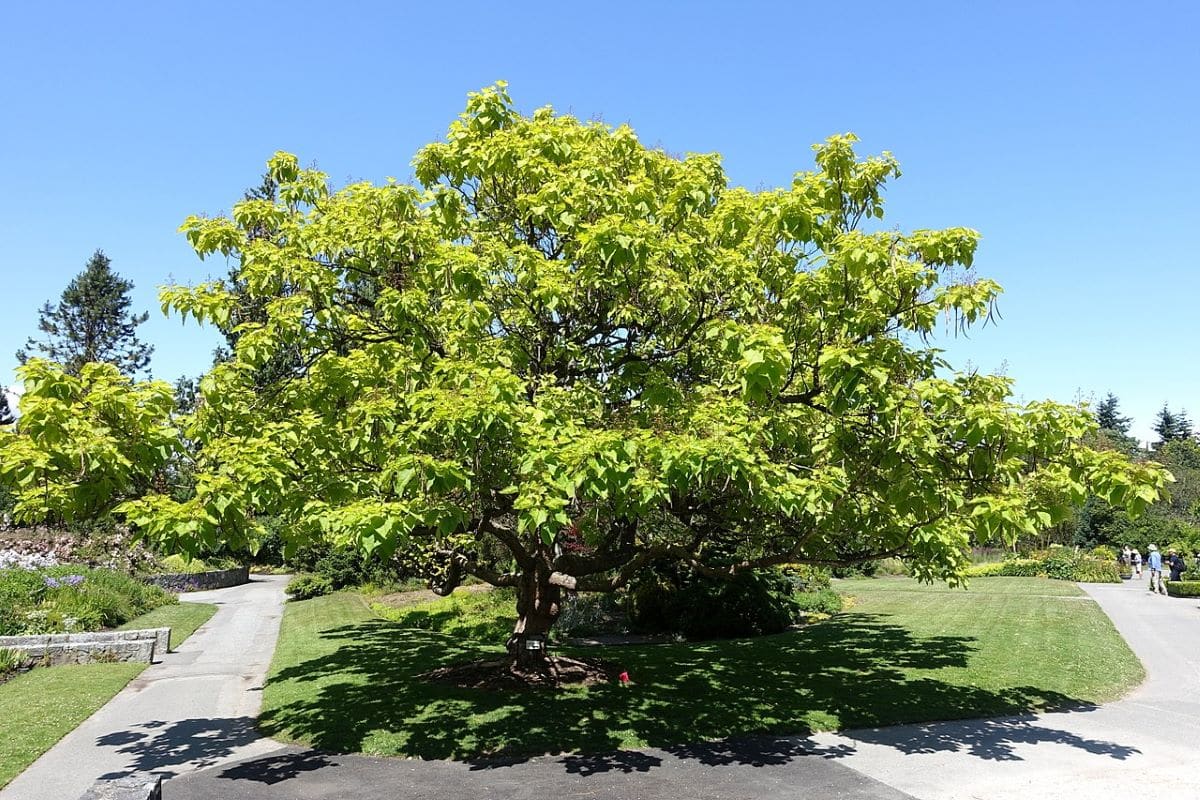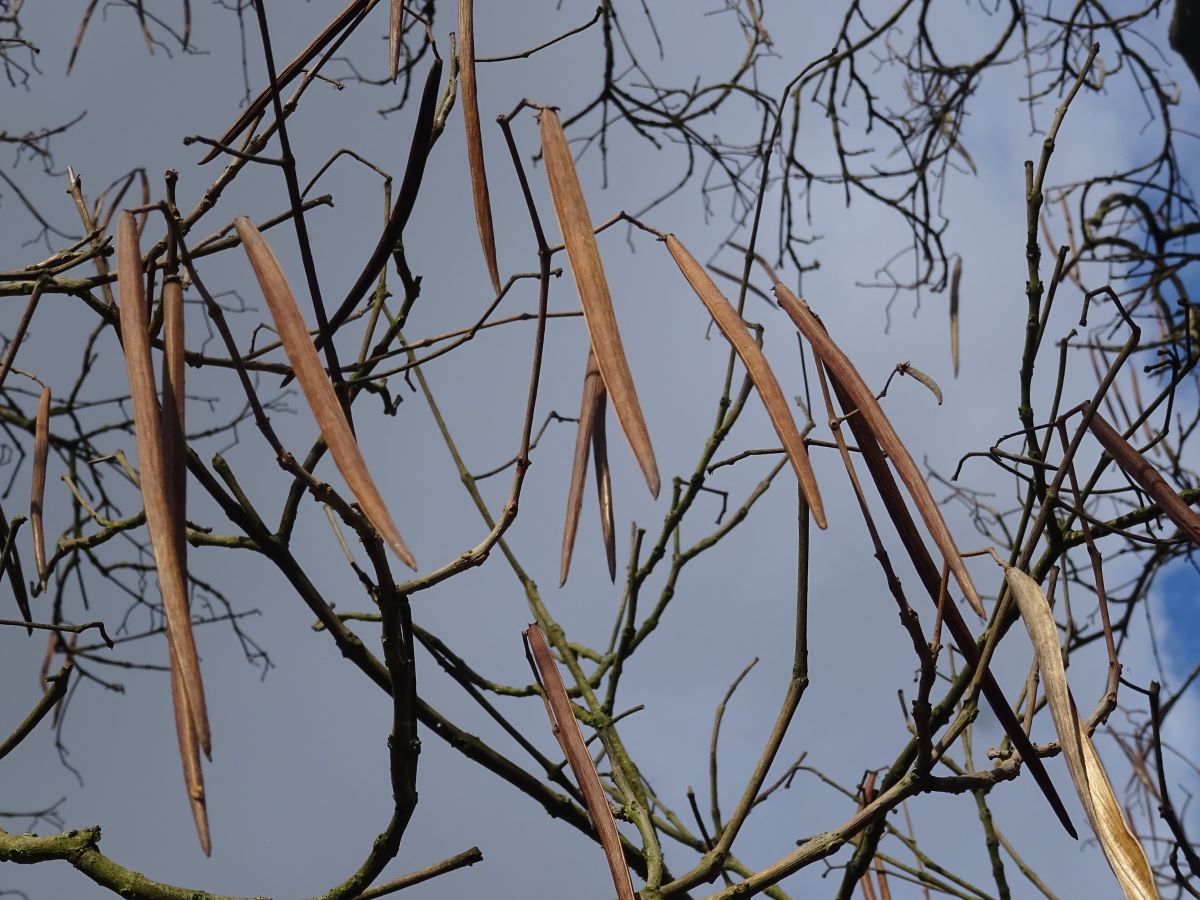
The catalpa is a pretty deciduous tree with a fairly wide crown. With large, green leaves and white flowers that sprout in clusters, this is a very interesting plant to grow in a garden.
It grows at a rate that, without being too high, does allow us to see notable changes from year to year. What's more, is able to live in different microclimates, as long as you are in a region where the four seasons are differentiated.
What plant is the catalpa?

Catalpa bignonioides 'Aurea'
Catalpa, whose scientific name is catalpa bignonioides, It is a deciduous tree native to the southeastern United States that reaches 15-20 meters in height. It has a trunk that is almost always straight, up to 1 meter in diameter, and a highly branched crown made up of large leaves, up to 30 centimeters wide by 20 centimeters long. These have the glabrous beam and the tomentose underside.
Its flowers bloom in the spring, sprouting from a branched floral stem that forms a panicle, which is terminal; that is, it dies as soon as it is no longer necessary, something that happens when the fruits finish their maturation or when the unpollinated flowers wither and fall. These flowers are white, and the fruit is an elongated capsule, similar to a legume or pod, which is about 30 centimeters long but can reach 50 centimeters.
The seeds are winged, 2-4 centimeters long and light brown-beige in color. They have a short viability, so they have to be sown as soon as possible to get them to germinate.
catalpa care
How to care for the catalpa? If you want to buy one, or have just done so, and want to provide it with the best care, then we recommend that you keep the following details in mind:
Location
Must have outside so that you feel the passing of the seasons and thus know when to grow, bloom, or rest until spring returns. In addition, it is advisable to give it direct sunlight for a good part of the day, but it tolerates semi-shade without problems.
You do not have to worry about its roots, since they are not invasive. In any case, you do not have to plant it next to a wall, otherwise its trunk will lean to the opposite side in search of more space for its crown. To avoid this, a separation of at least 4 or 5 meters must be left between the floor and the wall.
Earth

- Garden: Catalpa grows in fertile soils. Keep in mind that it fears waterlogging, so if the soil is very compact you will have to mix it with some porous substrate, such as pumice (for sale here) or la arlita (for sale here).
- Flower pot: if you are going to grow it in a pot for one season, you can use universal substrate, or mulch with 30% perlite (on sale here).
Irrigation
The catalpa is a tree that needs water, not frequently, but constantly. It is not a plant that tolerates drought, so it would not be a good idea to grow it in a region where it rains little. In fact, should receive water (whether from rain or irrigation) at least 3 times a week during the summer, and the rest of the year, as its growth rate drops considerably, once or twice a week will suffice.
Based on this, it is important to know the climate of the area in which we live, or at least know when it usually rains to adjust the irrigation schedule that we must follow.
Subscriber
Must be paid throughout the growing season, that is, from spring to early autumn, using organic fertilizers, such as earthworm humus (for sale here), chicken manure (dry) or cow, compost.
If we have it in a pot, I recommend using liquid fertilizers, such as guano in liquid form (for sale here), or fertilizers such as universal (for sale here) or green plants (for sale here).
Multiplication

Image – Flickr/Olive Titus
catalpa multiplies by seed during spring, and also by semi-woody cuttings in summer. By seeds it is relatively easy, because you only have to sow them in a pot or, better, in a forestry tray, with universal substrate (for sale here), water and put in a sunny place.
The selected cuttings must be from one-year-old branches, which are beginning to lignify but are still quite tender. In addition, they must measure about 40 centimeters long, and their base must be impregnated with rooting hormones (for sale here) to get them to root. Then, they are planted in pots with vermiculite (for sale here) previously watered, and kept in semi-shade.
Pruning
It is not advisable to prune, since the catalpa could lose part of its natural beauty. Maybe remove the branches that are broken or look bad, but nothing more. This can be done in late winter.
When to plant the catalpa?
Can be planted in soil or repotted late winter, when you see that the yolks begin to swell or a little before. You have to do it carefully, trying not to manipulate the roots too much. In this way, it will be able to recover better from the transplant and, therefore, will resume its growth earlier.
Plagues and diseases
It is very, very sturdy. But it can have aphids, mealybugs and fungi such as powdery mildew or Polyporus, which usually reaches the interior of the tree through pruning wounds. Pests are treated with specific insecticides, and fungi with fungicides (for sale No products found.) but also watering only when necessary and keeping the plant well cared for.
Rusticity
Withstands frost down to -15ºC, and high temperatures of 35-38ºC if you have water. It can live in areas where frosts are weak.
What did you think of the catalpa?